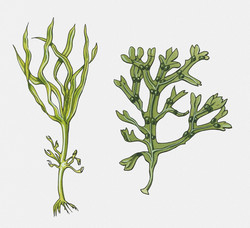Macroalgae are important for marine ecosystems
Different types of macroalgae (seaweed) habitats ensure the survival of different types of fish populations. Understanding the distribution of these habitats is important for future fish production. The EU-funded LINKFISH (Investigating the link between sub-littoral algae habitats and fish communities in the Mediterranean Sea) project investigated the food web structure of one shallow water algal system and two deep water algal systems. These systems are common in the Mediterranean and have important implications for fish production. The LINKFISH team conducted surveys to study the composition of macroalgae habitats and the types of marine fauna associated with them. The team surveyed a total of eight sites in different locations around Mallorca and Menorca in different seasons. A total of 384 algae samples and 15 000 algae-associated fauna were collected and studied in the laboratory. LINKFISH found that different types of algae contain different types of fauna. The size of fauna varied between algae types, but the abundance of fauna was relatively similar among algae species. The main types of prey that found shelter in these habitats were juvenile crustaceans. The crustaceans are prey to larger fish and, by visual surveys, the scientists could link different types of fish to different types of prey. The algae and fish data gathered from this study will be used to develop management plans and large-scale conservation efforts. The results of LINKFISH are important for the preservation of marine ecosystems and the future of fish production.
Keywords
Macroalgae, marine ecosystems, seaweeds, fish production, food web, Mediterranean







